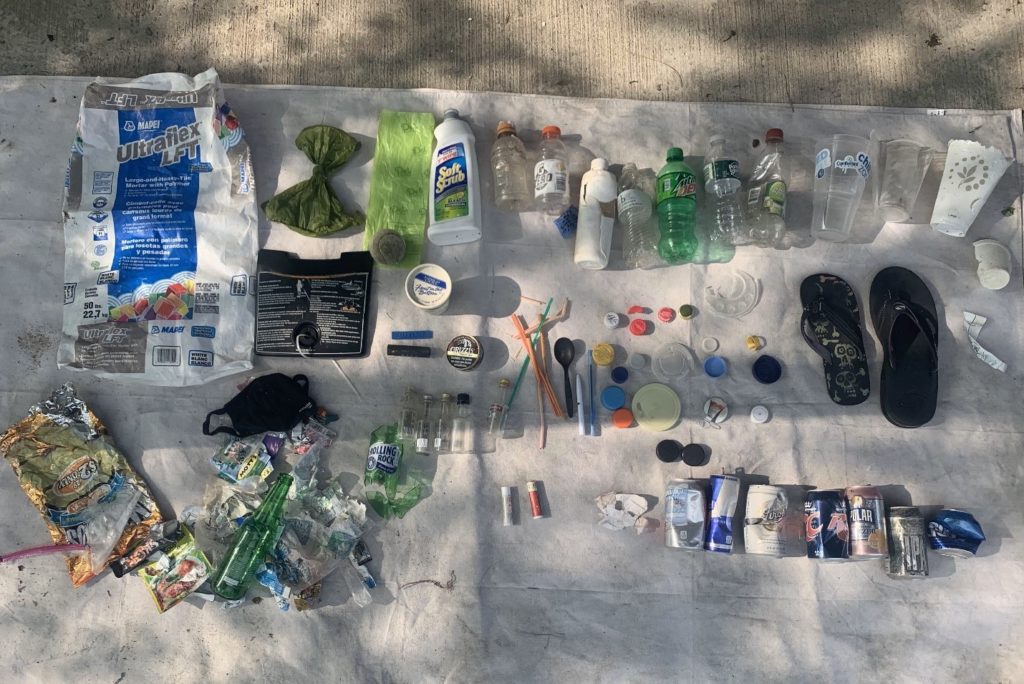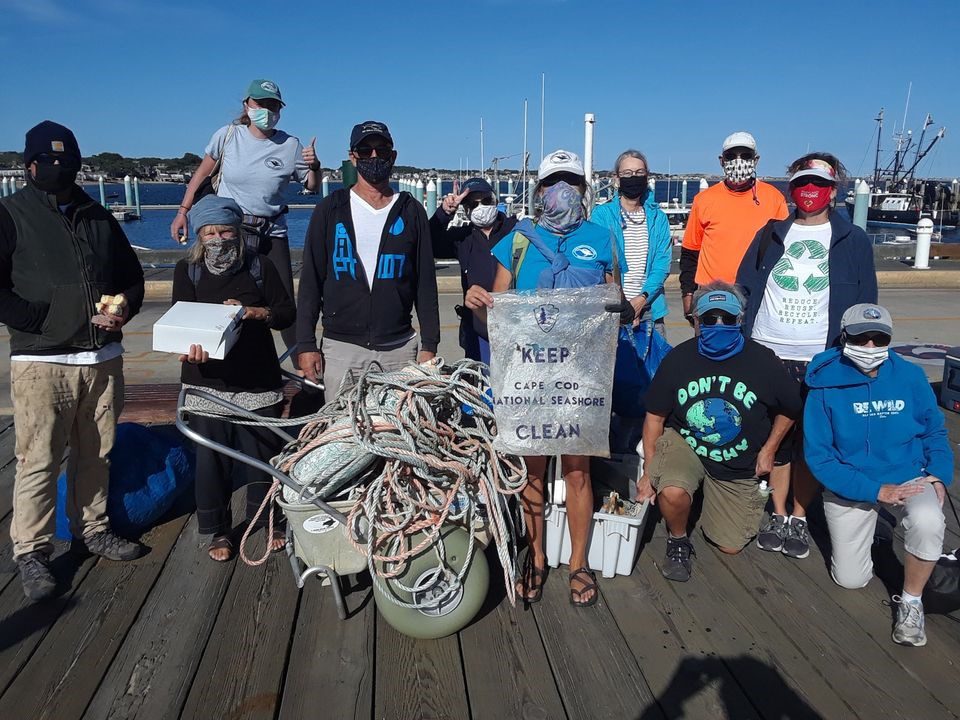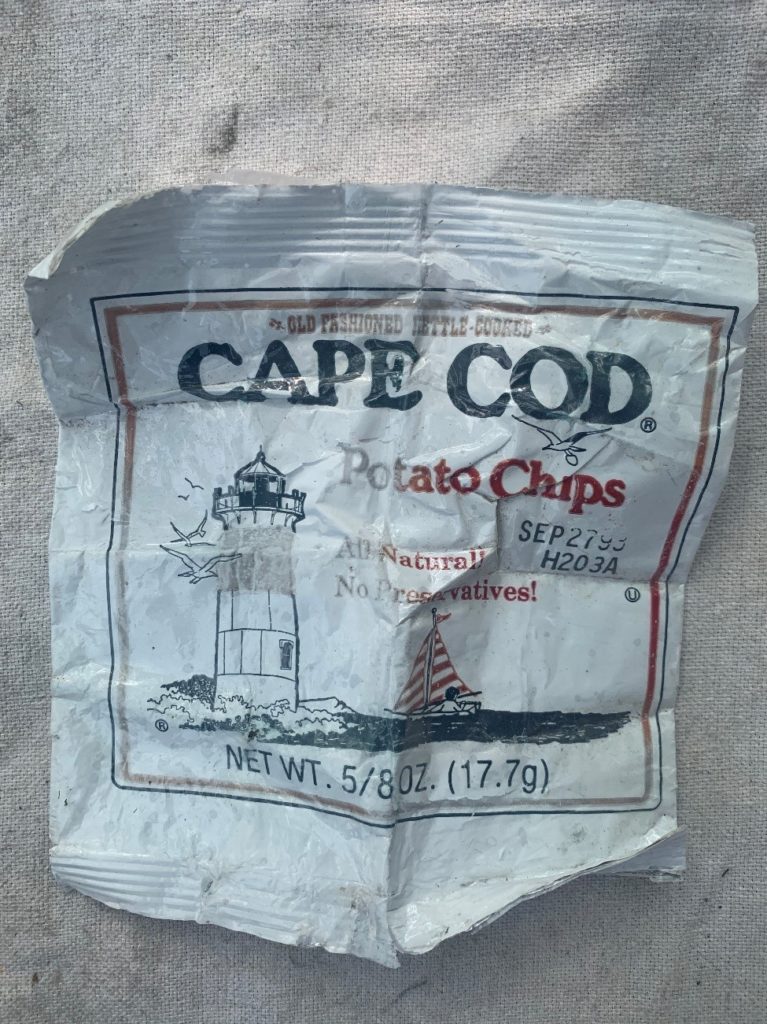October 16, 2020
Jenna Schwerzmann, Joanna Toole Intern

Branded trash collected as part of our International Coastal Cleanup on Long Point. We only saved the plastic materials for the brand audit.
If you have read our previous blog entries for the year, you know our team has been busy with beach cleanups over the past several months! After collecting our trash, we usually do what we call an “inventory,” which involves sorting and recording data on our trash collection. During one of our inventory days, as we sorted through some food wrappers, Amy Green, our Marine Debris and Plastics Intern, mentioned the possibility of a brand audit. To which I replied, “What’s a brand audit?”
A brand audit is an extra element that can be added to your beach cleanup. It is organized by a program called Break Free From Plastic (BFFP). According to their website, a brand audit is “a citizen science initiative that involves counting and documenting the brands found on plastic waste collected at a cleanup to help identify the companies responsible for plastic pollution.” In other words, it shifts the blame of plastic pollution off the consumer and back towards the companies that use so much plastic!
After Amy and I did the one-hour training required for brand audit leaders, we were ready to go! Many trained participants choose to add brand audits to their September cleanups for International Coastal Cleanup Month, and we did the same. All the trash collected from Long Point on September 12th was saved until we could get our hands on it.

Center for Coastal Studies volunteers with some of the haul from Long Point, 9/12/20.
While the process is simple, it took a lot longer than either of us expected. Out of 1,236 items collected, we had only 101 pieces of plastic with identifiable brands. Since all the debris had degraded from being in the environment, it took a while to figure out what each item was and to find the plastic #1-7 if labeled. Luckily, Amy was very patient with me while I searched for the right data.
From our collection, we found:
- The top company represented in our brand audit was Pepsico, followed by The Coca-Cola Company and a tie between Nestle and Hershey Company.
- 70% of our branded plastic fell into the food packaging category. The second-largest category was household products at 14.5%.
- Only 23 of our branded plastic items had a visible number identifying which of the seven plastic types were used. Of those, 10 items were plastic #1, or PET, which is the most common and most recyclable.
- We also recorded whether a product was made from a single-layer material, which is usually recyclable, or a multi-layer of plastics, foil, or paper, making it not recyclable. About 34% of our trash was multi-layered.

A local find, with an expiration date in 1993! This chip bag, made of multi-layered plastic and aluminum, has been floating around as pollution for 27 years!
Our data was submitted to BFFP to be included in their annual report. The report will call attention to the companies creating the most plastic that ended up as pollution. Check out the top offenders of 2019 in this press release. If you are wondering how you can participate in a brand audit, there are two ways to do it! You can add it to a beach cleanup, or you can conduct an indoor audit of the plastic trash in your home, office, or school. Brand audit data needs to be submitted to BFFP by October 15th each year. For more detailed information, check out the Brand Audit Toolkit before your next season of beach cleanups
Or, to complete an indoor brand audit of your home, office, or school:
- Sign up for a brand audit training if you are organizing the brand audit, and have everyone in your home, office or school watch this three-minute video.
- Register your event on the Break Free From Plastic website so your data will count!
- Prepare for your cleanup: let everyone who might participate to save any branded plastic for the week, instead of recycling or throwing it out. Print your data sheets so they are ready to go at the end of your 7-day audit.
- Conduct your brand audit: after the seven days are over, carefully sort through your collection for each item, recording the name of the brand, type of product, material, and whether it’s single- or multi-layered.
- Remember that data needs to be submitted by October 15th, so now’s the time to get trained, do a practice run, and engage your friends and family!
We are so excited we could contribute to this amazing project and we can’t wait to see the results in the Brand Audit Report for 2020. Thank you to Break Free From Plastic for making this possible!

Our Work
Humpback Whale Research
Right Whale Research
Marine Animal Entanglement Response
Marine Geology Department
Water Quality Monitoring Program
Marine Fisheries Research
Seal Research
Shark Research
Marine Education
Interdisciplinary
Marine Debris and Plastics Program
Marine Policy Initiative
Cape Cod Climate Change Collaborative
Publications

